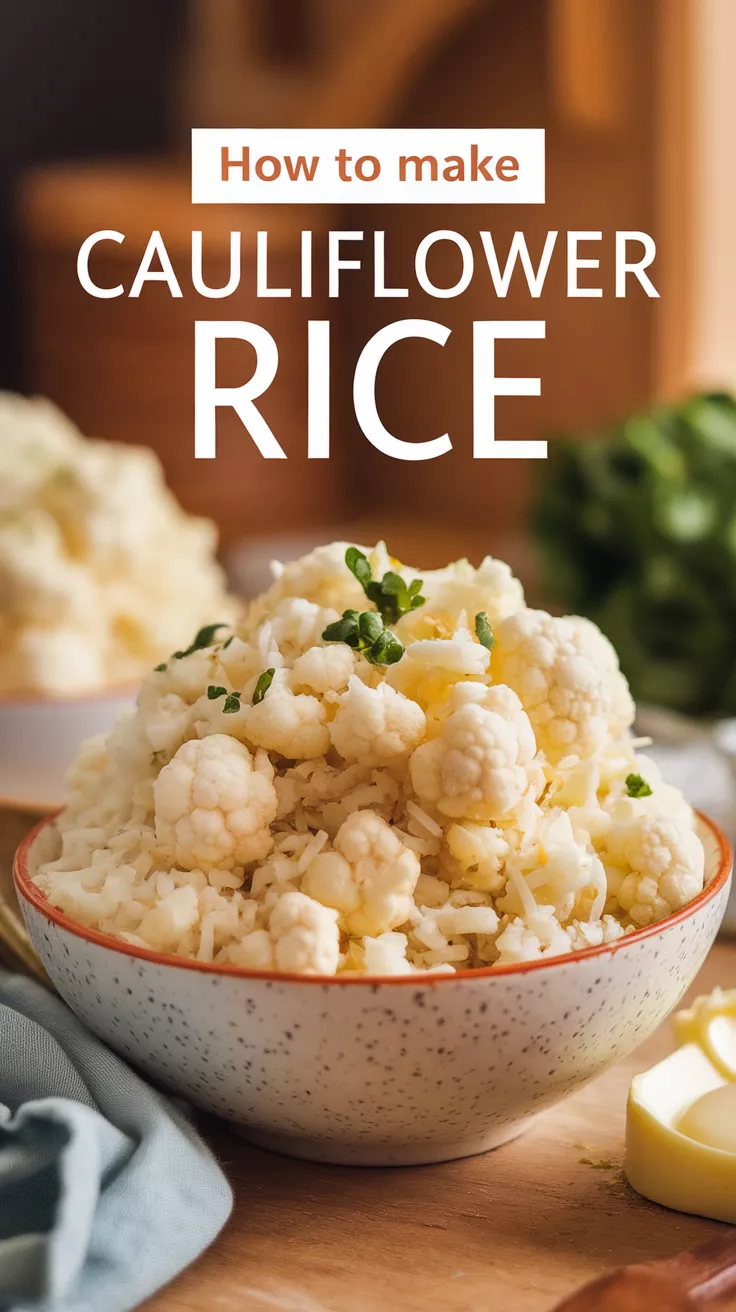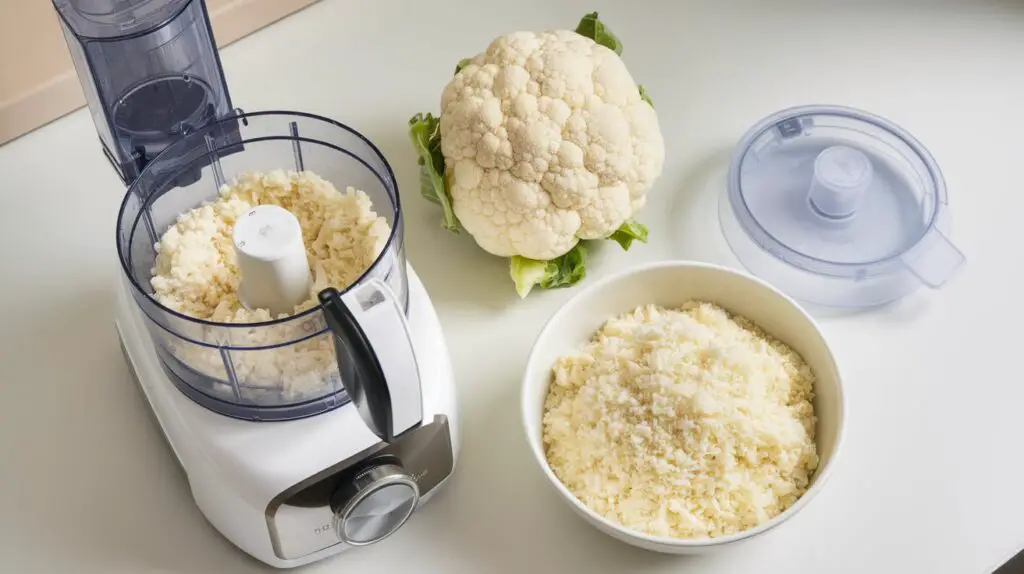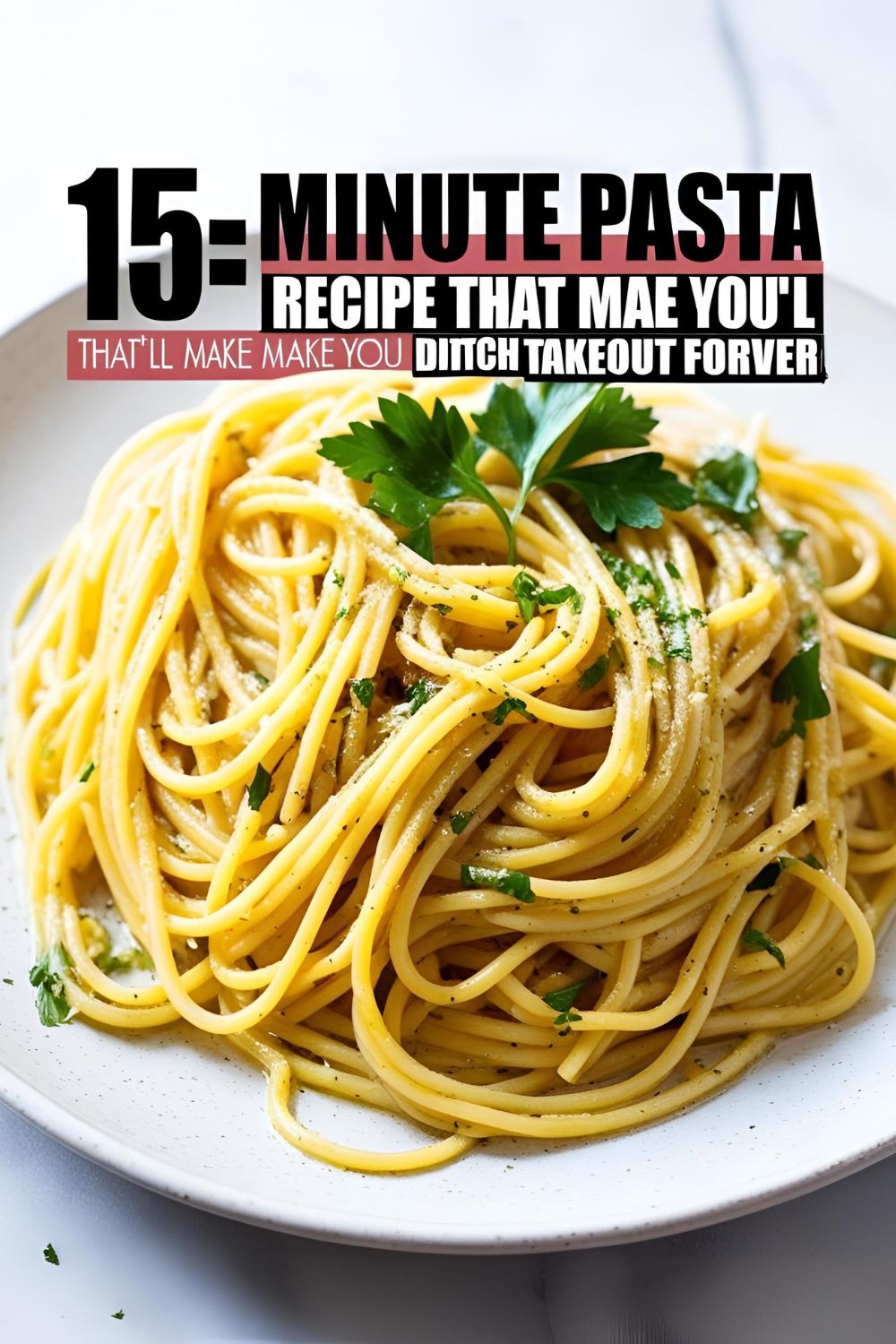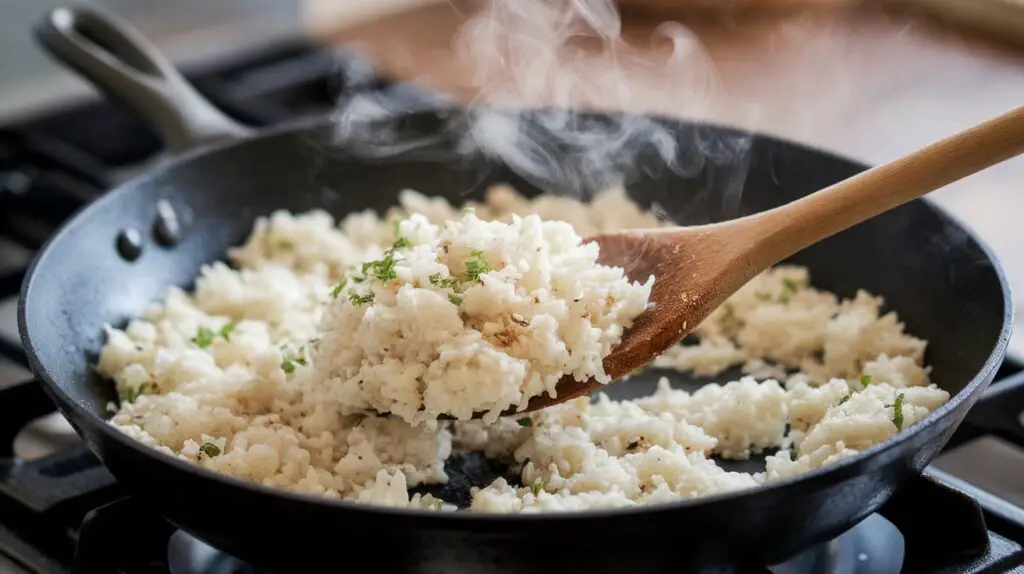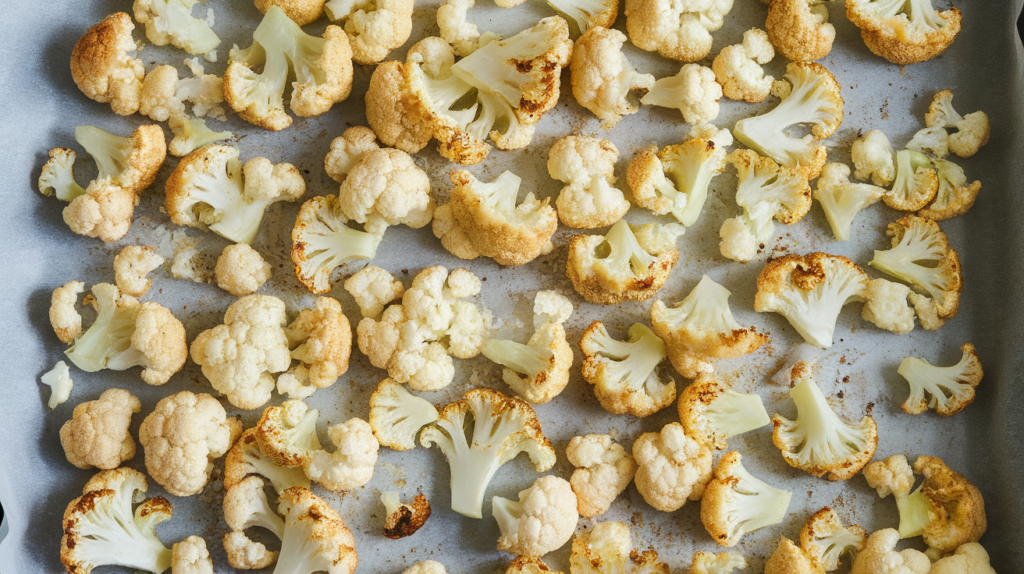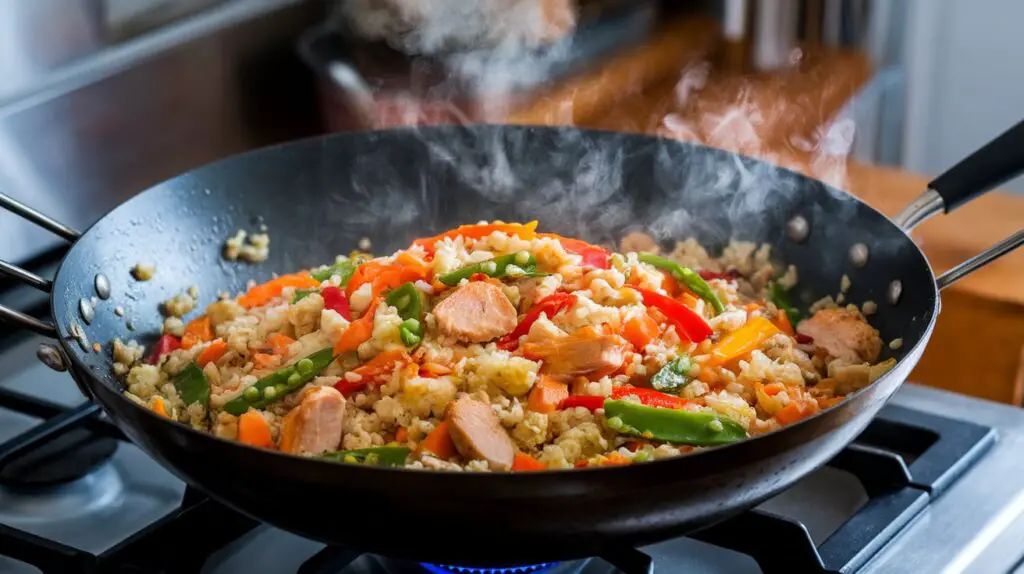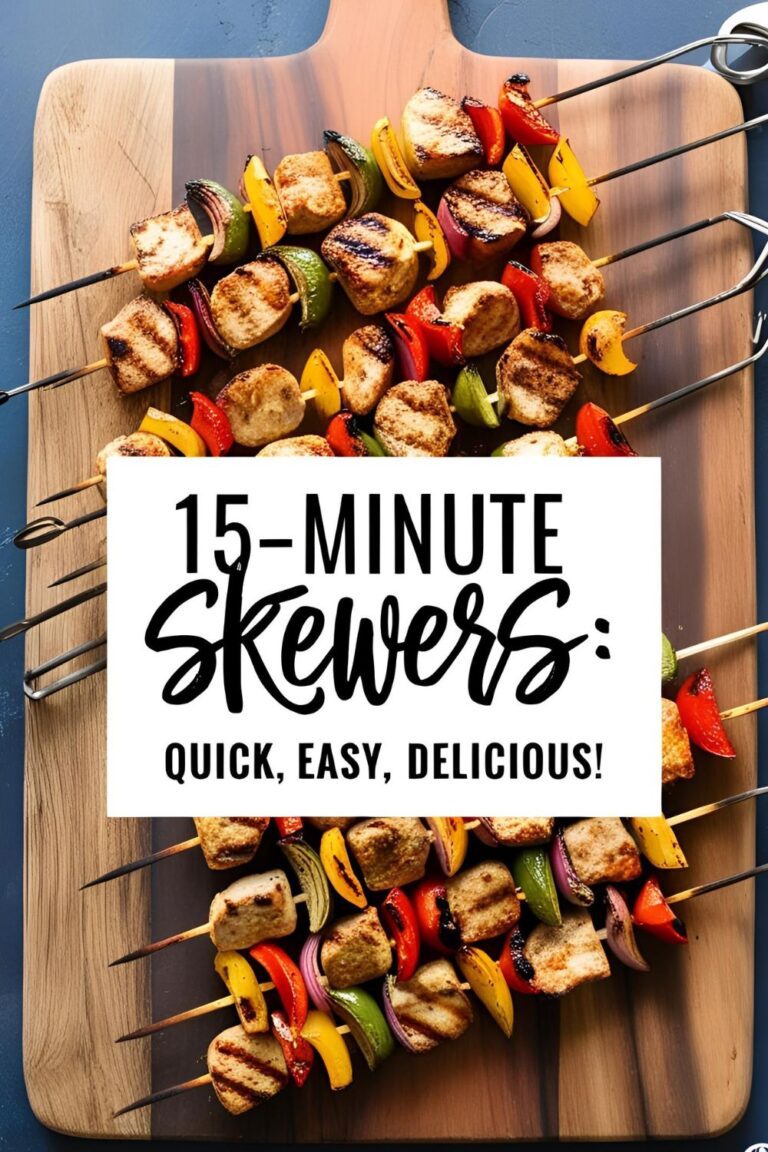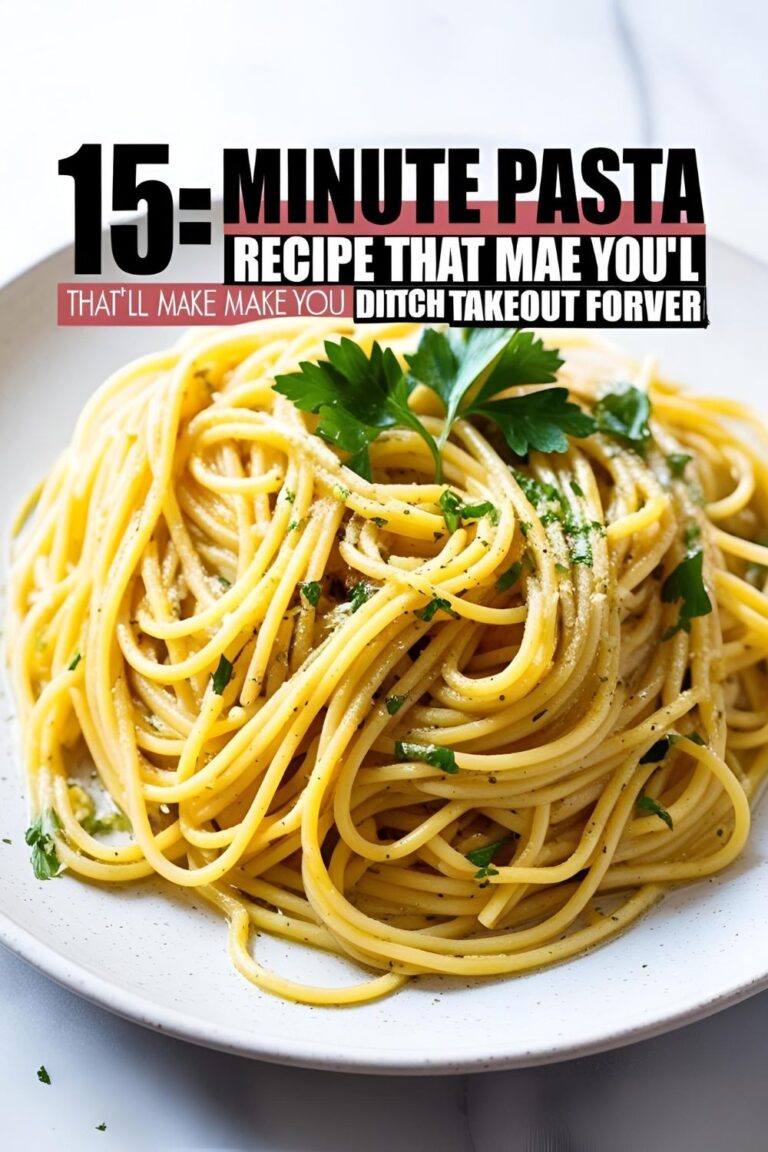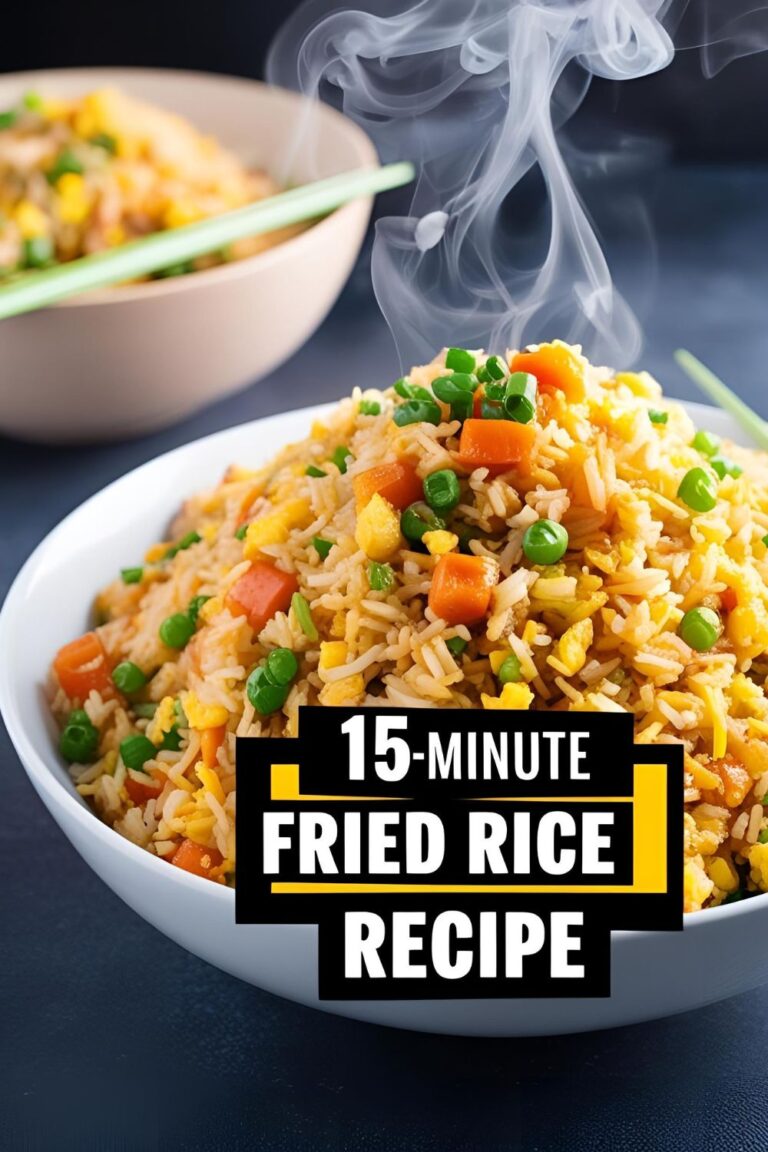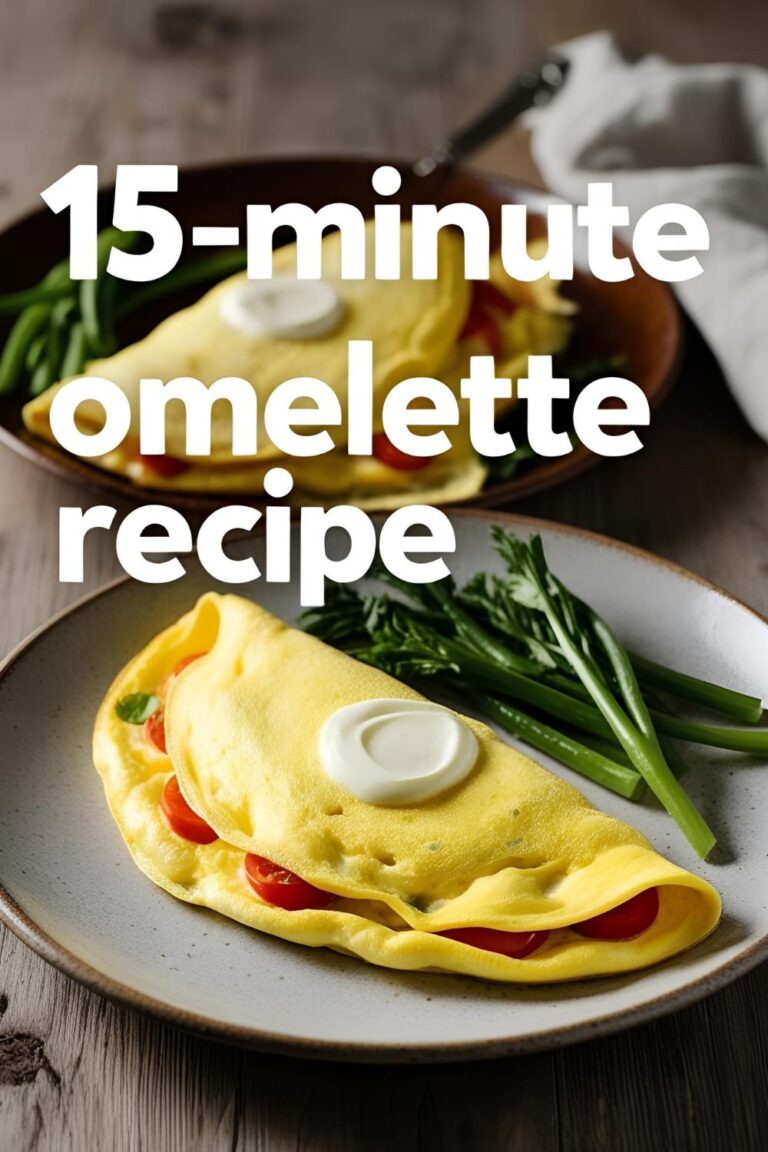Cauliflower Rice Wizardry: How to Make Cauliflower Rice That’s Fluffy, Not Soggy!
Ever stood in the grocery store, eyeing that bag of riced cauliflower with a mix of curiosity and skepticism? Or perhaps you bravely bought a head of cauliflower, envisioning fluffy, grain-like goodness, only to end up with a watery, mushy mess that vaguely resembles… well, not rice? Yeah, me too. For years, my attempts at homemade cauliflower rice were less “culinary triumph” and more “vegetable-based disappointment.” It felt like a low-carb dream that always ended in a soggy reality.
But what if I told you that mastering how to make cauliflower rice isn’t just possible, it’s incredibly easy once you know a few simple tricks? What if you could consistently whip up a light, fluffy, and perfectly textured rice alternative that actually absorbs flavor and makes your meals feel complete, not deprived? You’re about to unlock the secrets to the best way to cook cauliflower rice, transforming this humble veggie into a versatile, delicious, and genuinely satisfying staple. Get ready to swap out traditional grains without sacrificing flavor or texture.
Why Cauliflower Rice is Your New Best Friend
So, why jump on the cauliflower rice bandwagon? Besides the obvious benefits of a low carb cauliflower rice option (hello, keto and paleo friends!), this veggie is a nutritional powerhouse. It’s packed with fiber, Vitamin C, Vitamin K, and numerous antioxidants. It’s also incredibly low in calories, making it a fantastic base for healthy cauliflower rice recipes that can support weight management and overall wellness.
Learning how to make cauliflower rice opens up a world of culinary possibilities. It’s not just a substitute; it’s a versatile ingredient that can mimic rice in texture, absorbing sauces and flavors beautifully. Forget the bland, soggy nightmares of the past; we’re aiming for a fluffy, satisfying grain alternative that’s ready in minutes. It’s truly a simple cauliflower rice recipe that delivers big on health benefits and taste. Are you ready to embrace the cauliflower revolution? I knew you were!
The Cauliflower Crew: Essential Ingredients & Tools
Making homemade cauliflower rice is surprisingly simple, requiring just one core ingredient and a few basic kitchen tools. The real magic happens in the technique!
Essential Ingredients
- 1 Medium to Large Head of Cauliflower: Look for a firm, white, and compact head with no brown spots or discoloration. Avoid cauliflower that feels light for its size; you want dense florets.
- Olive Oil or Your Preferred Cooking Fat: A little fat helps cook the riced cauliflower evenly and prevents sticking, especially for sauteed cauliflower rice or roasted cauliflower rice.
- Salt (Kosher or Sea Salt): Essential for seasoning and bringing out the natural flavor.
- Freshly Ground Black Pepper: A simple addition for a hint of warmth.
Optional Flavor Boosters (Highly Recommended for Flavorful Results!)
- Minced Garlic or Garlic Powder: A classic pairing that adds savory depth.
- Onion Powder: For a subtle onion flavor without the moisture of fresh onions.
- Dried Herbs: Italian seasoning, oregano, thyme, or a blend can enhance the flavor profile.
- Lemon Juice/Zest: A squeeze or sprinkle at the end brightens the taste.
- Nutritional Yeast: For a cheesy, umami flavor (great for healthy cauliflower rice recipes).
- Fresh Herbs: Chopped parsley, cilantro, or chives for a fresh finish.
Your Ricing & Cooking Arsenal: Tools & Kitchen Gadgets
You probably already own most of these tools, making cauliflower rice preparation accessible for everyone.
- Food Processor (Recommended!):
- This is by far the easiest and fastest way to make cauliflower rice. It creates consistent, rice-like grains in seconds.
- Box Grater:
- If you don’t have a food processor, the large holes of a box grater work well for grating cauliflower into “rice.” It takes more elbow grease, though!
- Sharp Knife:
- For breaking down the cauliflower head into florets.
- Cutting Board:
- A sturdy surface for cutting the cauliflower.
- Large Skillet or Frying Pan:
- Your go-to for sauteed cauliflower rice and cauliflower rice stir fry. A non-stick pan is often helpful.
- Baking Sheet:
- For roasted cauliflower rice. A rimmed baking sheet prevents pieces from falling off.
- Tongs or Spatula:
- For stirring and flipping while cooking.
The Cauliflower Comeback: How to Make Cauliflower Rice (Step-by-Step Methods!)
Alright, let’s turn that head of cauliflower into the light, fluffy rice alternative of your dreams! We’ll cover the best ways to both make the rice and then cook it, ensuring you get perfect, non-soggy results every time.
Step 1: Making the Cauliflower Rice (The Ricing Process)
This is the fundamental step in how to make cauliflower rice. You want uniform, small, rice-sized pieces, not mush or big chunks.
- Prep the Cauliflower: Remove the outer green leaves from the cauliflower head. Use a sharp knife to cut the cauliflower into large florets. Discard the tough core.
- Ricing with a Food Processor (Best Method):
- Place a handful of cauliflower florets into your food processor (don’t overcrowd it!).
- Pulse repeatedly in short bursts (1-second pulses) until the cauliflower breaks down into small, rice-like grains. Be careful not to over-process, or you’ll end up with a paste! You want distinct “rice” pieces.
- Empty the riced cauliflower into a large bowl and repeat with the remaining florets.
- Ricing with a Box Grater (Manual Method):
- Place a box grater on your cutting board.
- Use the large holes of the grater to grate the cauliflower florets into rice-like pieces directly into a bowl. This method requires more effort but yields good results if you don’t have a food processor.
Step 2: Cooking the Cauliflower Rice (Your Choices for Perfection!)
Once you have your riced cauliflower, it’s time to cook it. The key here is high heat and short cooking times to avoid sogginess. This is the best way to cook cauliflower rice so it’s not soggy.
Method 1: Sautéed Cauliflower Rice (Quick & Versatile!)
This is the most popular and versatile method for how to make cauliflower rice. It’s perfect for a quick cauliflower rice recipe.
- Heat the Pan: Add 1-2 tablespoons of olive oil or your chosen cooking fat to a large skillet or frying pan over medium-high heat. The pan should be hot.
- Add Cauliflower Rice: Add the fresh or frozen cauliflower rice to the hot pan in a single layer. Do not overcrowd the pan! Work in batches if necessary. Overcrowding lowers the pan temperature and leads to steaming, not browning.
- Season & Cook: Immediately season generously with salt and pepper. Add any optional flavor boosters like garlic powder, onion powder, or dried herbs.
- Sauté to Perfection: Sauteed cauliflower rice cooks quickly! Stir-fry for 5-8 minutes, stirring occasionally with tongs or a spatula, until the cauliflower rice is tender-crisp and lightly browned. It should still have a slight bite, not be mushy.
5. Serve: Remove from heat and serve immediately as a cauliflower rice side dish or as the base for a main meal.
Method 2: Roasted Cauliflower Rice (Deep Flavor & Less Hands-On!)
Roasted cauliflower rice develops a deeper, nuttier flavor and a slightly firmer texture. This makes for fantastic roasted cauliflower rice.
- Preheat Oven & Prep: Preheat your oven to 400°F (200°C). Spread your riced cauliflower evenly on a large baking sheet.
- Toss with Oil & Seasoning: Drizzle with 1-2 tablespoons of olive oil and season generously with salt, pepper, and desired herbs/spices. Toss well to coat every grain.
- Roast to Perfection: Roast cauliflower rice for 15-20 minutes, stirring halfway through, until tender-crisp and lightly golden brown. For extra crispiness, you can broil for the last 1-2 minutes, watching carefully!
4. Serve: Remove from oven and serve hot.
Method 3: Cauliflower Rice Stir Fry (A Flavorful Meal in One!)
Using cauliflower rice in a stir-fry is a fantastic way to create a full meal that’s both healthy and satisfying. This is a popular cauliflower rice stir fry option.
- Prep & Cook Proteins/Veggies: In a large skillet or wok, cook your desired protein (chicken, shrimp, tofu) and other vegetables (bell peppers, carrots, broccoli) until almost done. Remove them from the pan and set aside.
- Add Cauliflower Rice: Add a little more oil if needed, then add your riced cauliflower to the hot pan. Season lightly with salt and pepper.
- Quick Sauté: Stir-fry the cauliflower rice for 3-5 minutes until tender-crisp.
- Combine & Sauce: Add your cooked protein and vegetables back to the pan. Pour in your favorite stir-fry sauce (soy sauce, ginger, garlic, sesame oil, etc.). Toss everything together until heated through and coated.
Calories & Nutritional Info (The Healthy Rice Alternative)
Cauliflower rice benefits are numerous, making it an excellent choice for a healthy cauliflower rice recipes diet. Here’s a general nutritional breakdown for plain, cooked riced cauliflower.
- Serving Size: Approximately 1 cup (cooked)
- Estimated Calories per Serving: ~25-35 calories (before added fats or sauces)
- Key Nutritional Notes:
- Very Low in Calories: Significantly fewer calories than traditional rice.
- Low in Carbohydrates: An excellent choice for keto, paleo, and other low carb cauliflower rice diets.
- High in Fiber: Aids digestion and promotes fullness.
- Rich in Vitamin C: Boosts immunity and acts as an antioxidant.
- Good Source of Vitamin K: Important for blood clotting and bone health.
- Contains Folate, Vitamin B6, and Potassium.
- Antioxidants: Helps protect cells from damage.
Incorporating cauliflower rice nutrition into your diet is a smart move for overall health!
Common Mistakes to Avoid (So Your Cauliflower Rice Isn’t a Soggy Saga!)
Even for a simple cauliflower rice recipe, a few common slip-ups can turn your dreams of fluffy grains into a watery, mushy nightmare. Pay attention to these cauliflower rice preparation tips!
- Overcooking: This is the absolute biggest mistake! Cauliflower has high water content and cooks very quickly. Overcooked cauliflower rice turns soggy and releases excess water. Cook it just until tender-crisp. This is the best way to cook cauliflower rice so it’s not soggy.
- Over-Processing (When Ricing): If you use a food processor and pulse too long, you’ll end up with cauliflower paste instead of “rice.” Use short, quick pulses and check consistency frequently.
- Overcrowding the Pan/Sheet: If you pile too much riced cauliflower into a skillet or on a baking sheet, it will steam instead of brown and crisp. Steam equals sogginess. Always cook in a single layer and in batches if necessary.
- Not Patting Dry (Especially if using fresh or thawing frozen): While cooking helps evaporate moisture, for extra crispness, especially in larger batches, you can gently press the riced cauliflower between paper towels to absorb excess water before cooking. This ensures crispy cauliflower rice.
- Under-Seasoning: Cauliflower has a mild flavor, so it needs a good amount of seasoning to taste great. Always salt and pepper generously before and during cooking. This addresses “How do you make cauliflower rice taste good?”
- Adding Too Much Liquid (When using in sauces): If you’re mixing cauliflower rice into a saucy dish, be mindful of the liquid. It doesn’t absorb liquid like regular rice. Add sauce gradually, or cook the sauce down first.
- Not Rinsing Pre-Packaged Rice: If buying pre-riced fresh cauliflower, sometimes it can have a strong “cauliflower” smell. A quick rinse and then thoroughly patting dry can help.
Variations & Customizations (Your Cauliflower Rice, Your Culinary Canvas!)
Once you’ve mastered how to make cauliflower rice using these fundamental methods, you can get incredibly creative. This versatile base is perfect for endless delicious meals!
- Cauliflower Fried Rice: Add soy sauce, sesame oil, scrambled egg, peas, carrots, and green onions to your sauteed cauliflower rice for a delicious, healthier take on fried rice.
- Cheesy Garlic Parmesan Cauliflower Rice: After cooking (sautéed or roasted), stir in some grated Parmesan cheese, fresh parsley, and extra minced garlic. Perfect as a cauliflower rice side dish.
- Cilantro Lime Cauliflower Rice: Mix cooked riced cauliflower with fresh lime juice, chopped cilantro, and a pinch of cumin for a vibrant, zesty side, great with tacos or grilled chicken.
- Mediterranean Cauliflower Rice: Toss with sun-dried tomatoes, Kalamata olives, feta cheese, and a drizzle of olive oil.
- “Risotto” Style Cauliflower Rice: Slowly cook riced cauliflower with broth, stirring frequently, and finish with Parmesan for a creamy (though not starchy!) “risotto.”
FAQ Section (Your Cauliflower Rice Queries, Answered!)
Still scratching your head over this amazing veggie? Here are some common questions about how to make cauliflower rice answered directly from what people are searching for.
Q1: What is the best way to cook cauliflower rice so it’s not soggy?
The best way to cook cauliflower rice so it’s not soggy is to cook it quickly over medium-high heat (sautéing or roasting) in a single layer, and avoid overcooking. Ensure the cauliflower is relatively dry before cooking (patting fresh rice with paper towels helps). Overcrowding the pan also leads to steaming and sogginess.
Q2: Is it better to cook fresh or frozen cauliflower rice?
Both fresh and frozen cauliflower rice cooking methods work well. Fresh cauliflower rice generally has a slightly better texture and less moisture to start with. However, frozen cauliflower rice is convenient; just ensure you cook it directly from frozen in a hot pan (don’t thaw first) and possibly extend cooking time slightly to evaporate moisture.
Q3: How do you make cauliflower rice taste good?
To make cauliflower rice taste good, season it generously with salt, pepper, and aromatics like garlic or onion powder. Using olive oil or butter helps absorb flavor. Adding fresh herbs, lemon juice, or turning it into a cauliflower rice stir fry or cheesy dish significantly boosts its appeal.
Q4: How long does it take to cook cauliflower rice?
How long does it take to cook cauliflower rice depends on the method:
- Sautéed: 5-8 minutes on medium-high heat.
- Roasted: 15-20 minutes at 400°F (200°C).
- Microwaved: 2-4 minutes. The goal is tender-crisp.
Q5: Do you have to cook cauliflower rice?
No, you do not have to cook cauliflower rice! You can eat raw riced cauliflower in salads, slaws, or as a crunchy base for poke bowls. Cooking changes its texture and makes it softer and more rice-like, which is generally preferred for warm dishes.
Q6: Can you use a blender to make cauliflower rice?
You can use a blender to make cauliflower rice, but it’s generally not recommended as the primary method. Blenders are more prone to over-processing and creating a purée or paste rather than distinct “rice” grains. If using a blender, work in very small batches and use short, quick pulses. A food processor or box grater provides better control.
Q7: How do you store cooked cauliflower rice?
You can store cooked cauliflower rice in an airtight container in the refrigerator for up to 3-4 days. Ensure it cools completely before storing. You can also freeze cooked cauliflower rice for up to 1 month; spread it in a single layer on a baking sheet to freeze, then transfer to a freezer-safe bag.
Final Thoughts (You’re a Cauliflower Rice Connoisseur Now!)
You’ve done it! You’ve officially mastered how to make cauliflower rice that’s fluffy, flavorful, and never soggy. No more bland, watery disappointments or grocery store guesswork. You now possess the knowledge to transform this humble veggie into a vibrant, versatile, and incredibly satisfying low carb cauliflower rice alternative. Go forth and cook that cauliflower with confidence, whether you’re making a cauliflower rice stir fry, a roasted cauliflower rice side, or a simple cauliflower rice side dish. Your taste buds (and your macros!) will thank you. Now, if you’ll excuse me, I think I hear a delicious, healthy meal calling my name… 🍚✨

